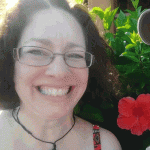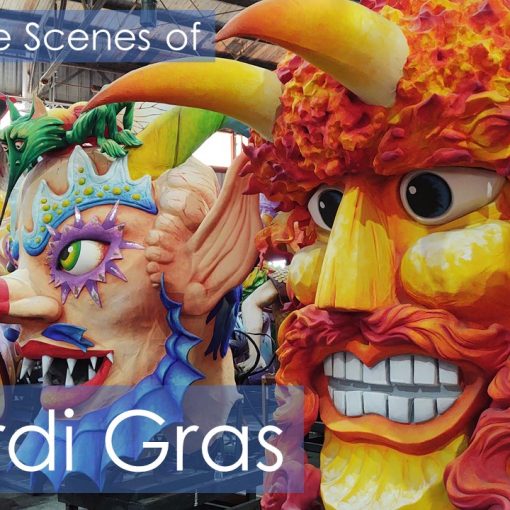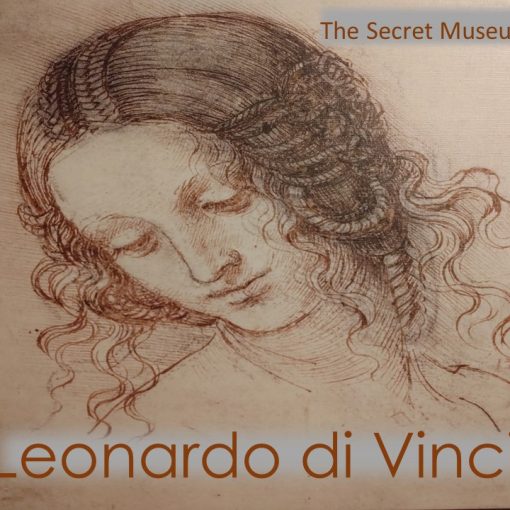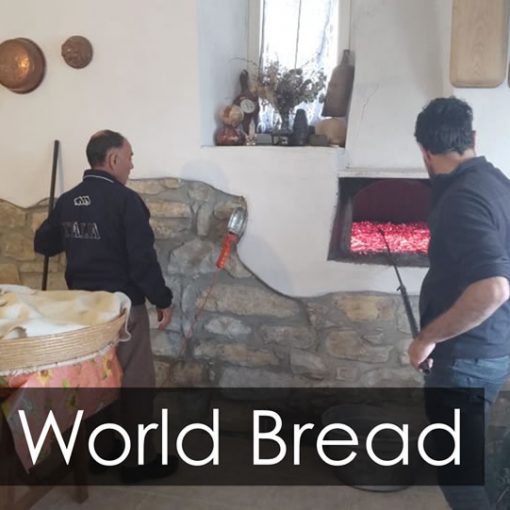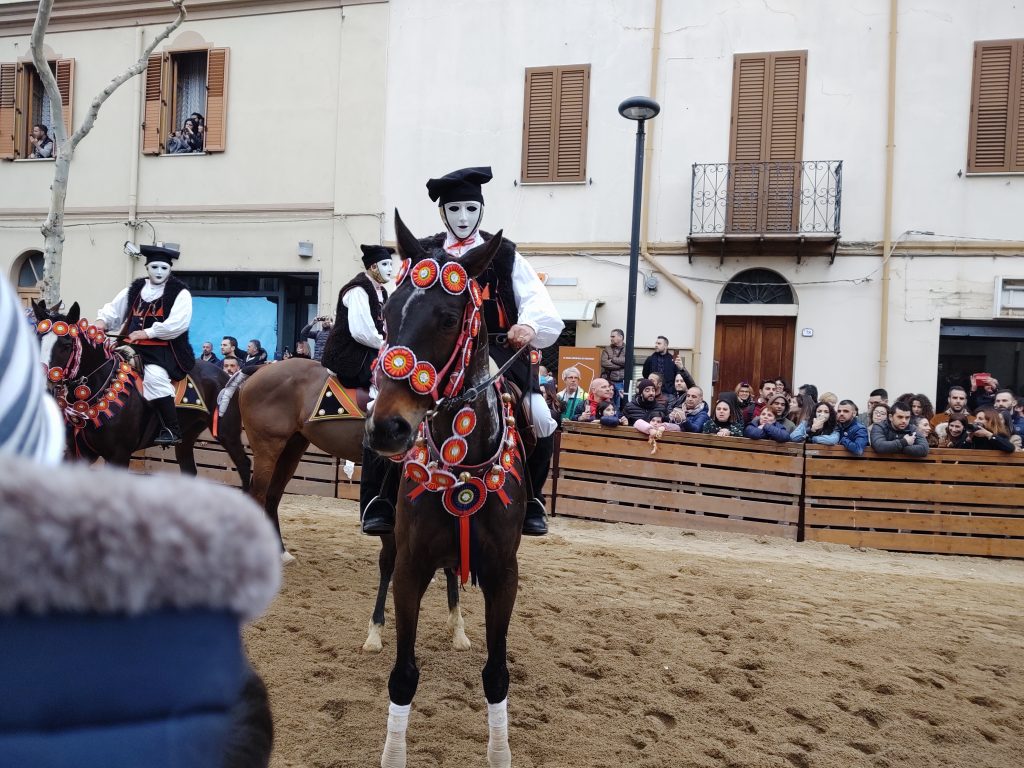
Spearing a metal star and standing on galloping horses are part of the tradition.
Spectators, I learned, are discouraged from looking straight into the face of a masked rider. This can bring bad luck. Here’s an example of the direct “look” frozen in this photograph. Don’t stare too long! The three horses stepped out of formation, so I clicked a pic. So far I am doing alright in the luck department.
The Sa Sartiglia celebration has been documented in medieval records dating back to the 1500’s. It is suspected that this festival happened well before that recording. These celebrations take place on the last Sunday and Tuesday of the carnival on the island of Sardinia. Carnival is comparable to Mardi Gras. The Catholic church adapted pagan rituals into their Christian calendar. On Sunday the farmers compete and on Tuesday the carpenters have their turn. We observed on Sunday and were able to witness the farmers’ demonstration of passion and skill.
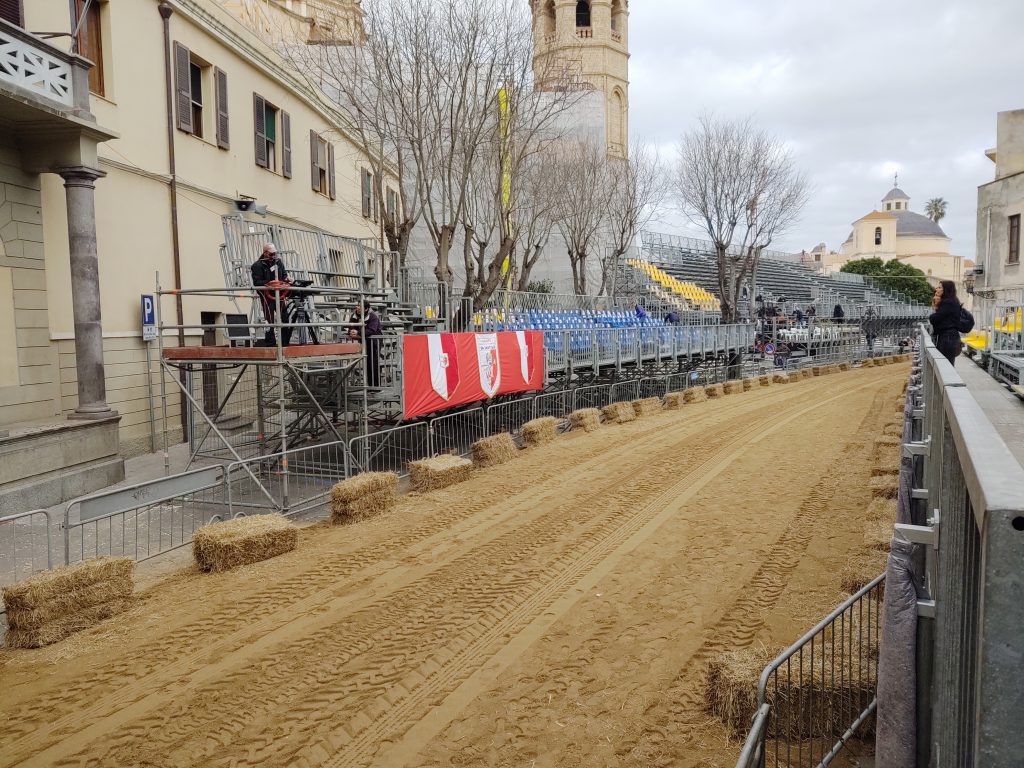
This is just outside our hotel’s entrance.
The goal is for each rider to spear a tin star strung across the street in front of the chapel. The more stars captured the more luck the farmers / carpenters will have in the coming year. There’s also the acrobatic stunts of standing on the back of one’s galloping horse that take place later in the day.
Sardinia has only been under Italy’s rule since 1861 by the Pope’s declaration. The Sardinian people are independent. They have their own language, Sardo, and their own flag which they wave proudly. Many other counties have attempted to conquer the island due to its ideal location in the Mediterranean Sea, but have all been unsuccessful. Their culture is profound and runs very deep through their bloodline.
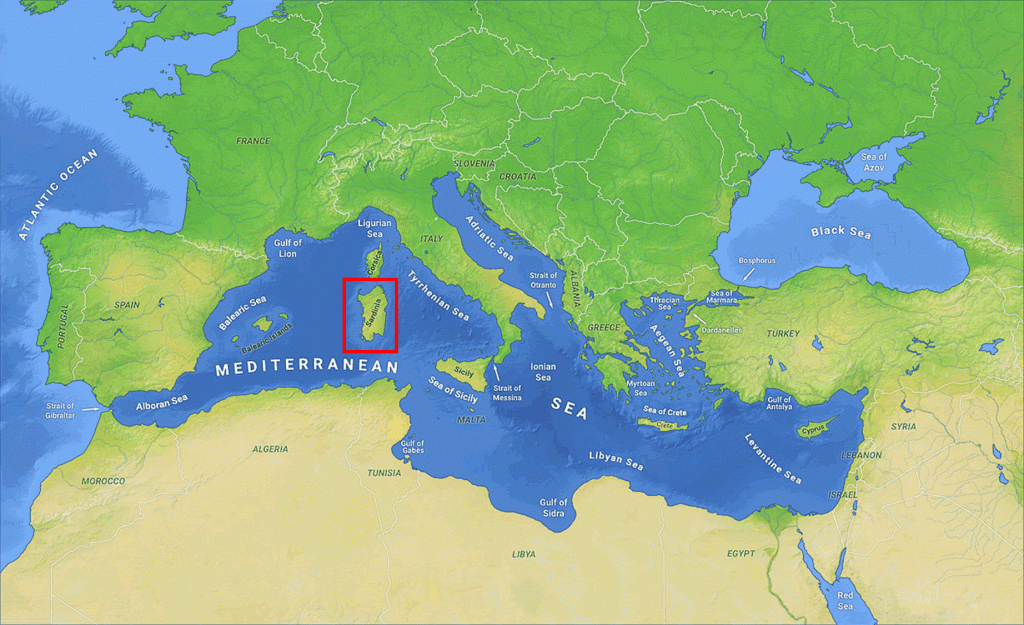
Oristano, the village where Sa Sartiglia occurs annually, is located on the west side in the center of the island. Its population is 30,000. With the carnival bringing the numbers to 250,000 people.
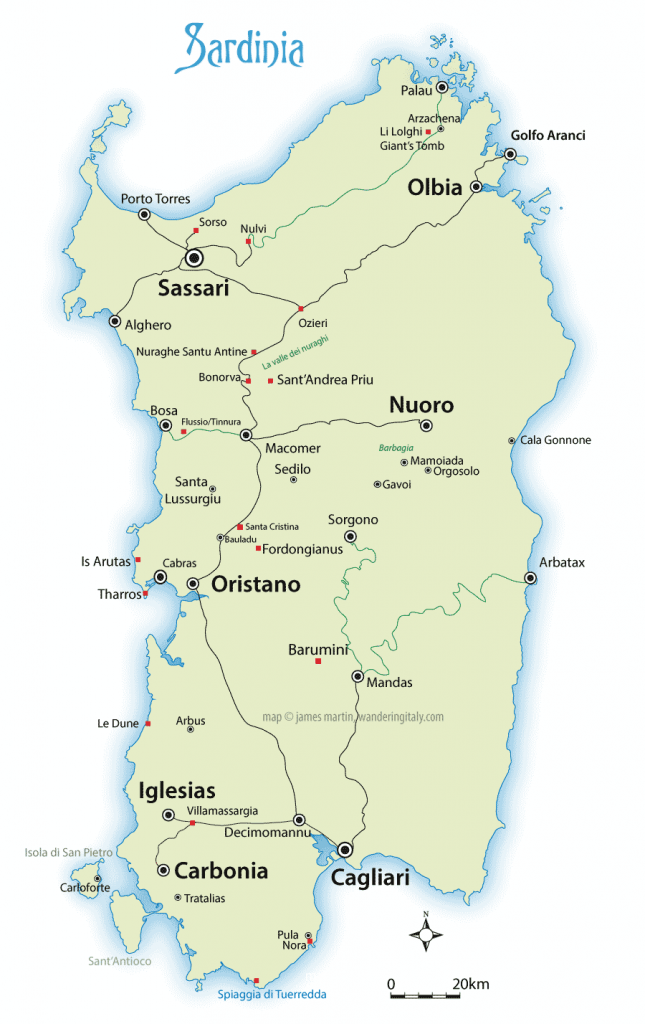
Ivo, our local connection, knows David. David’s family owns three white horses who have been selected to represent their village in the Sa Sartiglia celebration. We were immensely fortunate to be included in the dressing of the horses. As we walked up to the barns a choir was singing inside one of the stalls. The scent of smoked sausage lofted around us. A table of sweets was spread out under a crowded tent. David offered us Vernaccia wine, an island specialty.
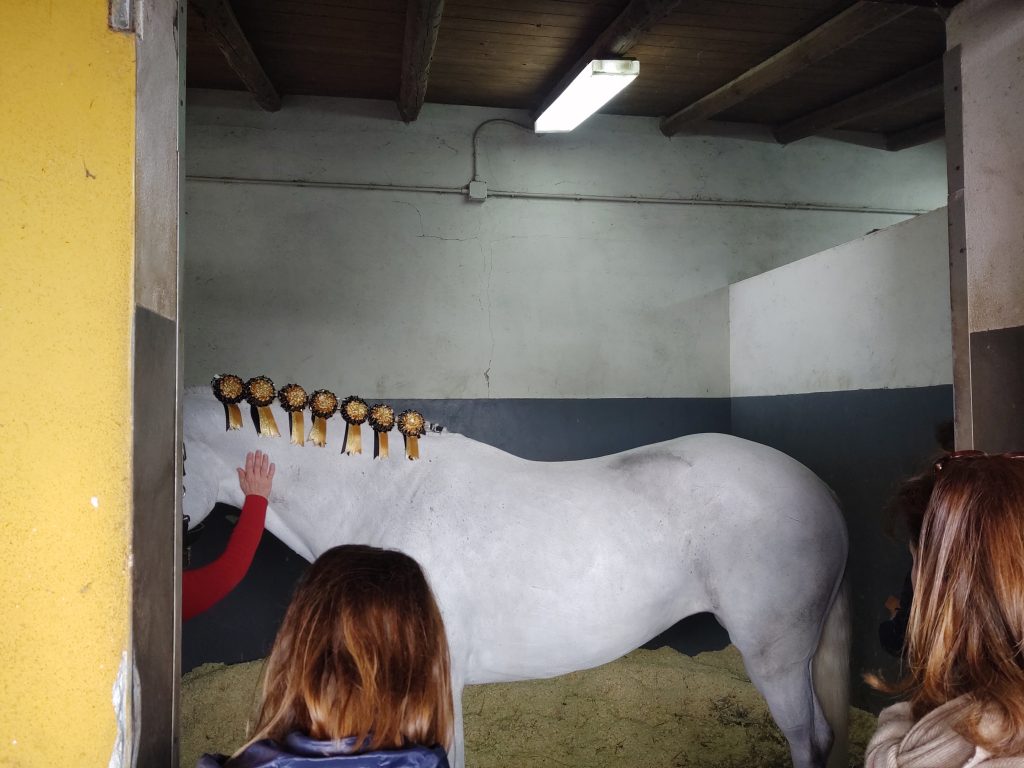
The stables are filled with family members all wearing these ribbon balls on their clothing.
This is Vea, which means goddess.
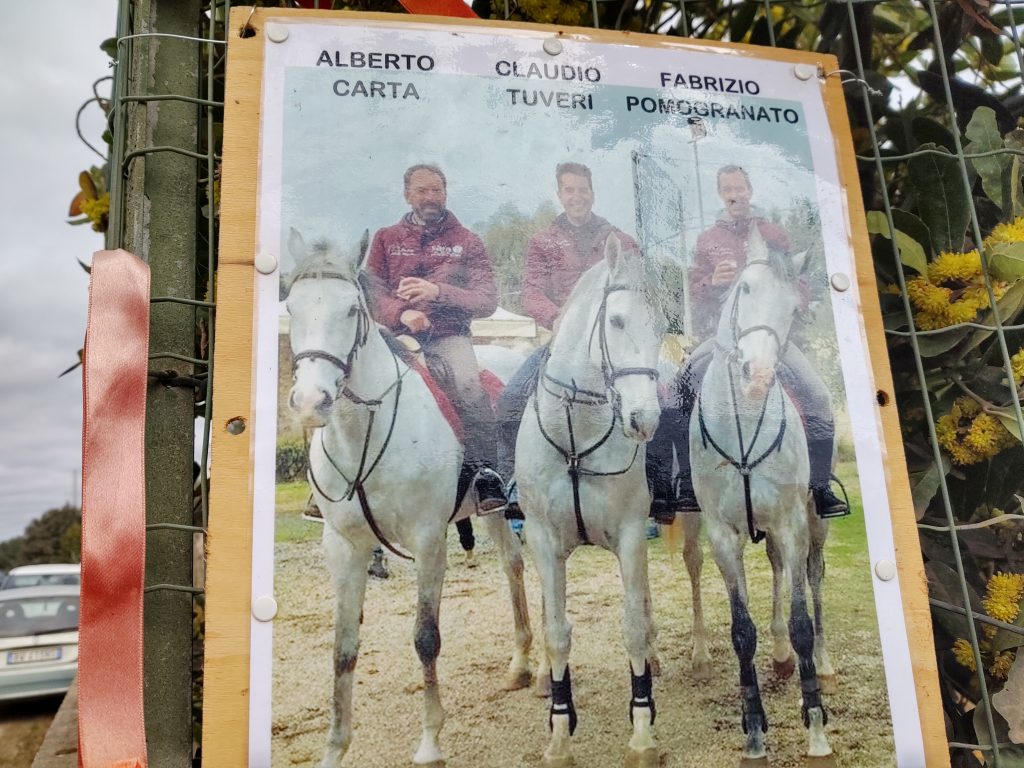
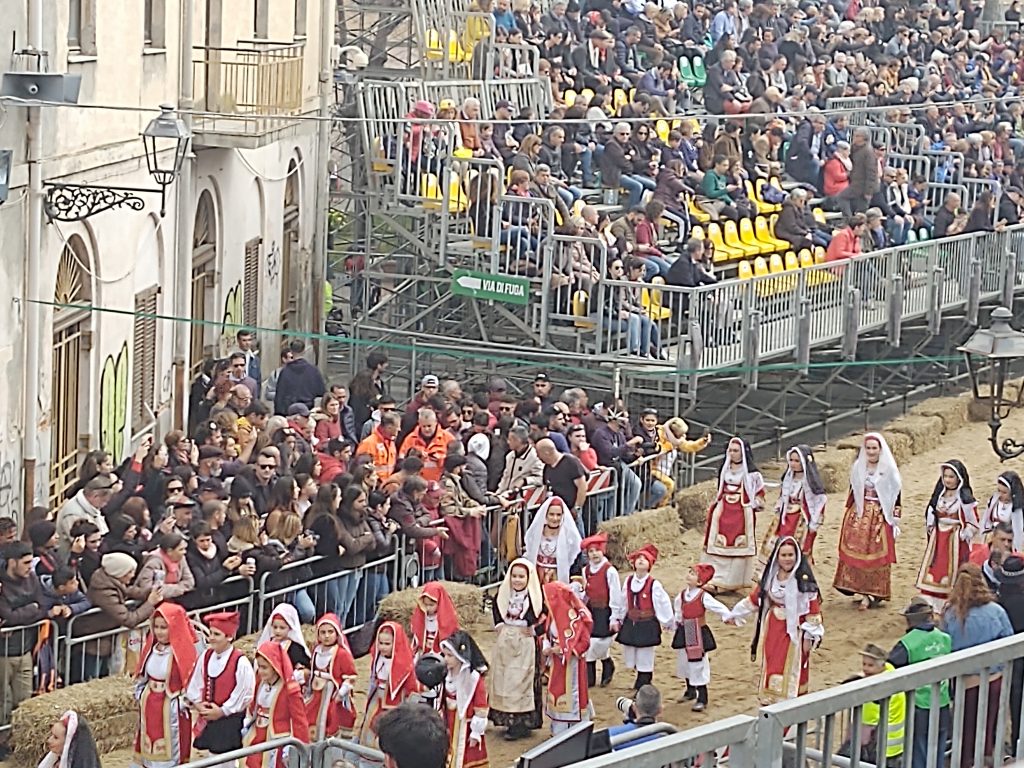
Each costume has been hand embroidered.
The festival started with a parade of costumed locals displaying their village ensembles. Each outfit was handmade with embroidery. Their pride was captivating.
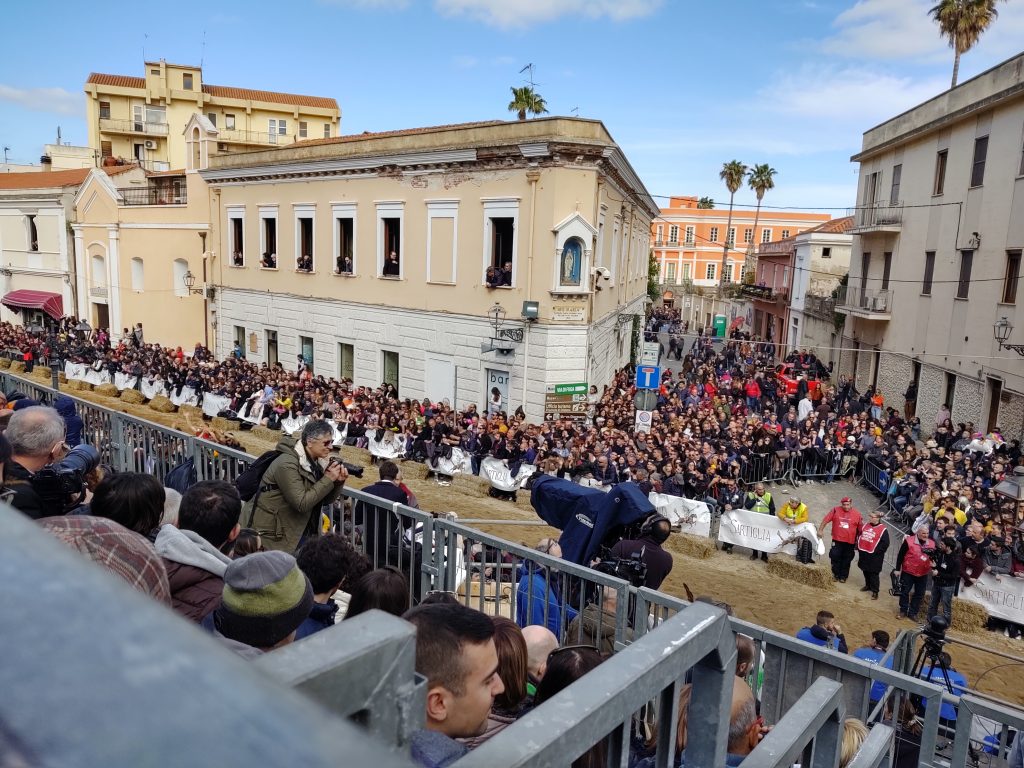
Even the Virgin Mary had a great view along with others hanging out of the windows.
The Sa Sarticlia is televised as well.
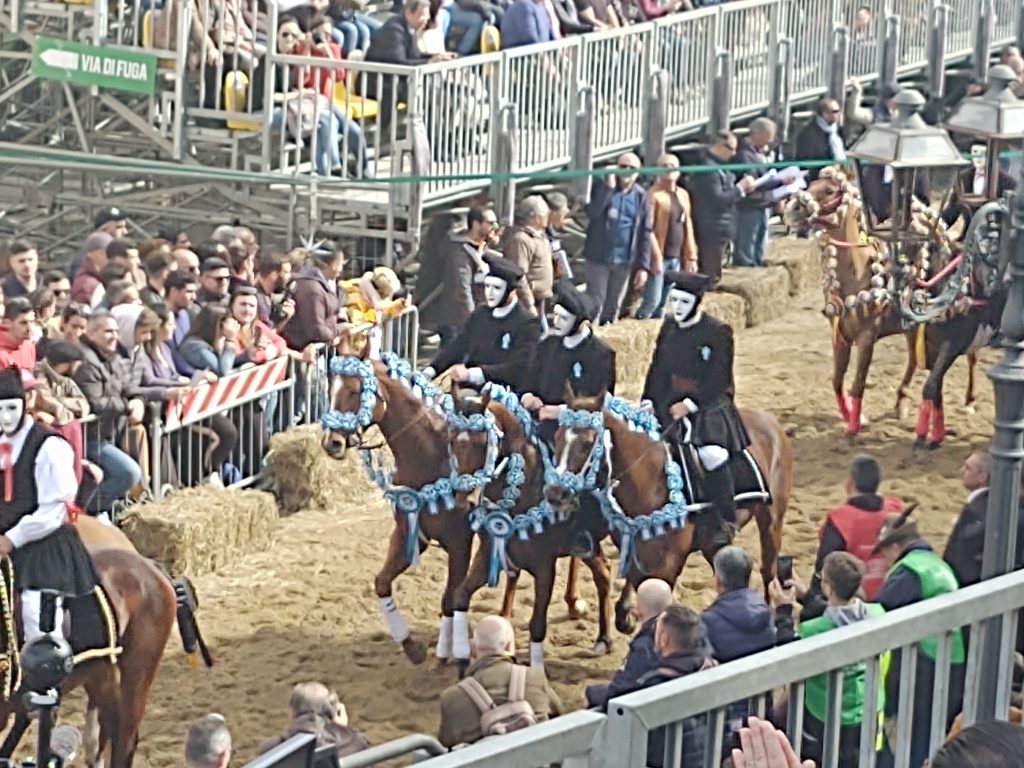
Many riders reach up and touch the tin star for good luck. (left of riders)
Each rider will try to spear it at a full gallop when the Sa Sartiglia starts.
Ignazio Lombardi had my heart. He was nominated by the guild to be the leader , Componidori, of the 2020 Sa Sartiglia. Ignazio had paid up to 80,000 Euros to be part of the guild. He had hosted celebrations and fundraisers, practiced horseman skills and led the other riders. (There are 70 other horsemen with one woman.) Ignazio is in his mid 50’s, I was impressed.
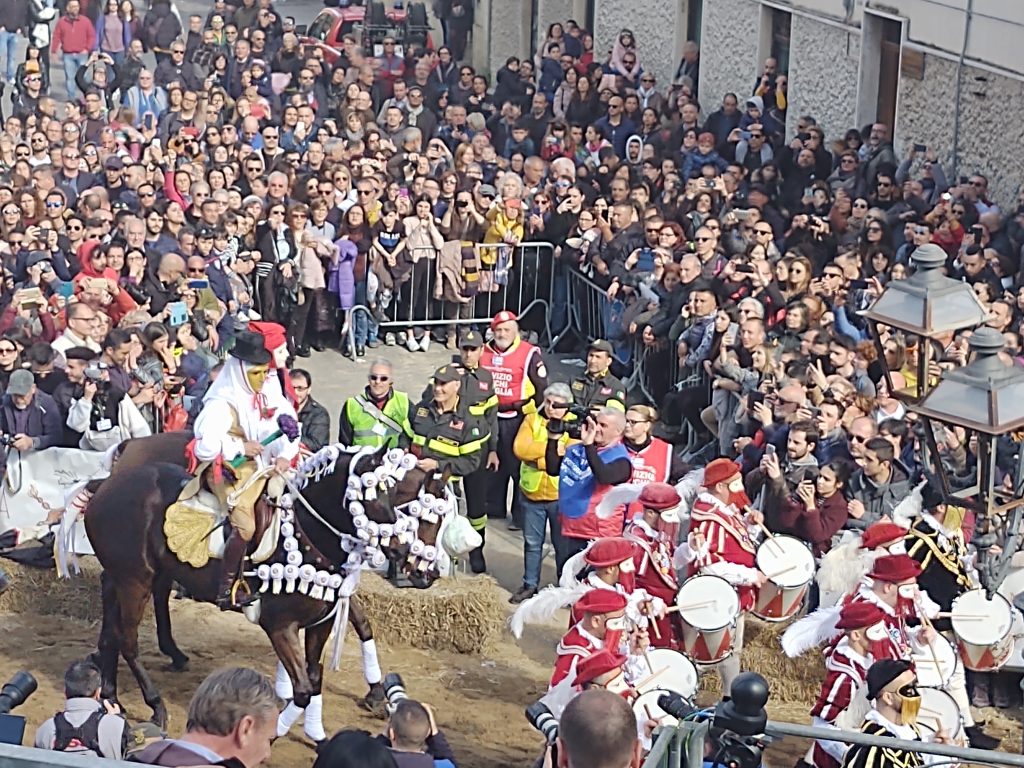
He’s in his 50’s.
The Segundo Cumponi (second in command) rode along side him.
That morning he was ceremonially dressed by six ladies with rituals that date back before the 1500’s. Once he was placed on his horse he was to not touch the ground. He graciously started the ceremony with the blessing of the crowd waving his sceptre in the sign of the cross as he rode up and down the path.
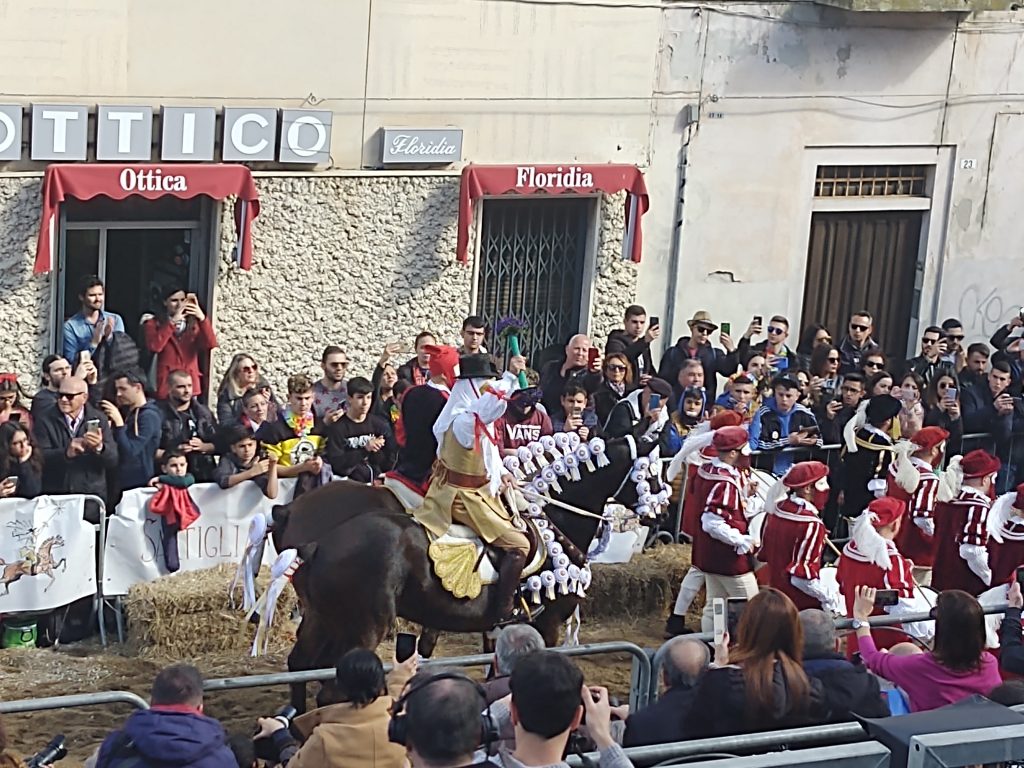
The Componidori, Ignazio Lombardi, made the first galloping pass under the star. The drummers and horn players encouraged him as he started out of sight at the beginning of the course. Ignazio charged down the path. The crowd was silent. Sheenk. He speared the star! The crowd instantly electrified stood and cheered. Their energy was charismatic and spellbinding. Their enchantment was endearing. I had tears in my eyes thinking of Ignazio’s dedication and the sweet reward of his success. The richness of experiencing this festival first hand among the locals was like being in a trance, a fairy tale. It was magical!
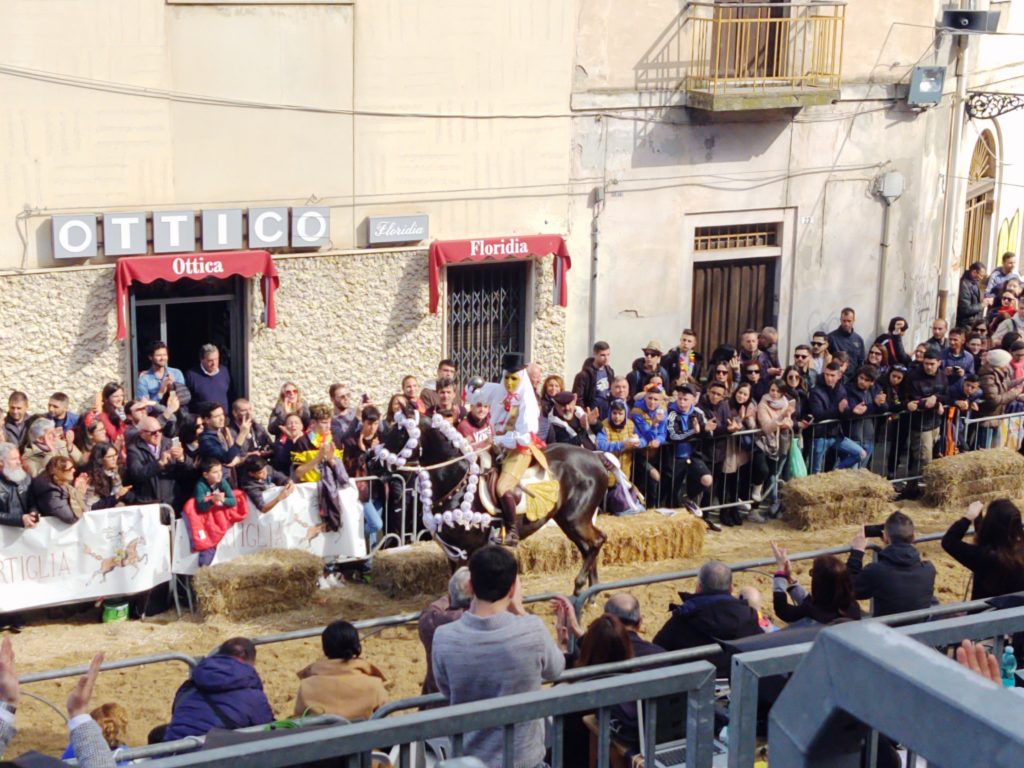
Here he was showing the spectators a glimpse of the star on his sword.
The horns and drums continued to announce each rider. Within moments a knight would arrive at a gallop and attempt to spear the star. Often the star was knocked off, landing nearby. A man in a gray jacket with a cigarette dangling from his lips would hustle over to the fallen piece of metal. He’d hold it out to the crowd as he ran back along the fence line. People stretched out their arms reaching to touch the ornament before it was hung on the line for the next competitor.
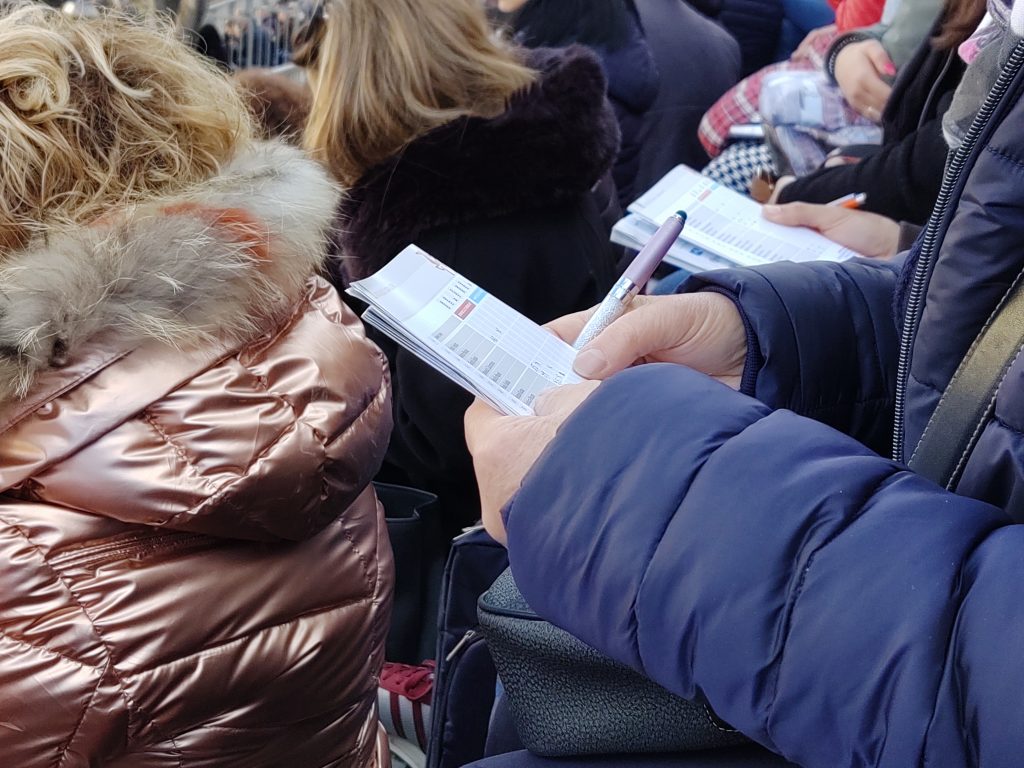
Twenty-two stars were captured that day. The farmers would have good fortune!
The couple sitting next to us was keeping score in their program of all the successfully speared stars. I was trying to figure out what page they were on as well as trying to casually click this photo. The woman noticed that I was . . . staring. She looked up and smiled. Then she held out the half of her cookie wrapped in a napkin. She must have thought the cookie was the focus of my gaze. I shook my head, “No Grazie.” She pushed the napkin with the half cookie into my lap. “Grazie” I smiled. “Prego” she said. ‘ Prego’ is used all the time in Italy/Sardinia. It means, “Here you go” or “After you” or “Very well.” Ivo nodded his approval, “You’re a good scavenger.” I shared the treat with Ivo and Chuck. I thanked the fellow spectator again, too.
After thirty riders we excused ourselves and walked a few blocks to another street where the acrobatic riders would be performing. It started with a parade of people dressed in their village handmade costumes. The musical flute, launeddas, is unique to Sardinia and captivated me. Ivo knew all about it. (pictured below)
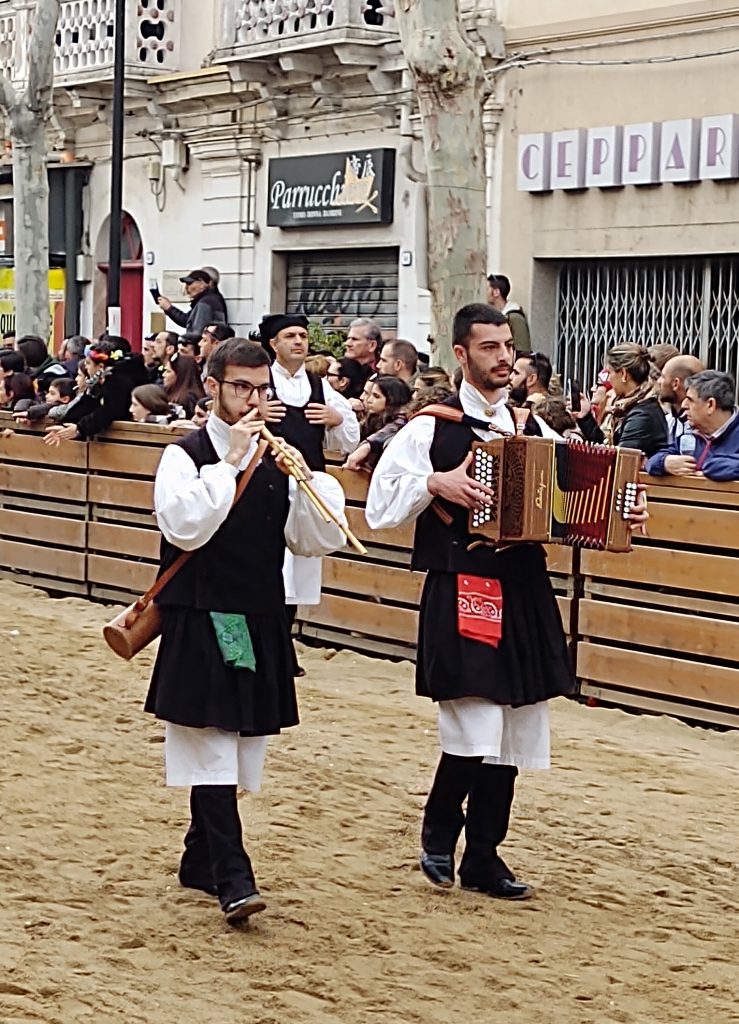
The accordion is another traditional instrument.
The Sardinian launeddas flute is the most ancient wind blown instrument. It is considered the father of the bagpipe. It must be played with continuous breathing. A youngster starts training with blowing constant bubbles through a straw. Lessons consist of learning to play three flutes at once. There are only two schools in Sardinia that teach how to play the launeddas these days.
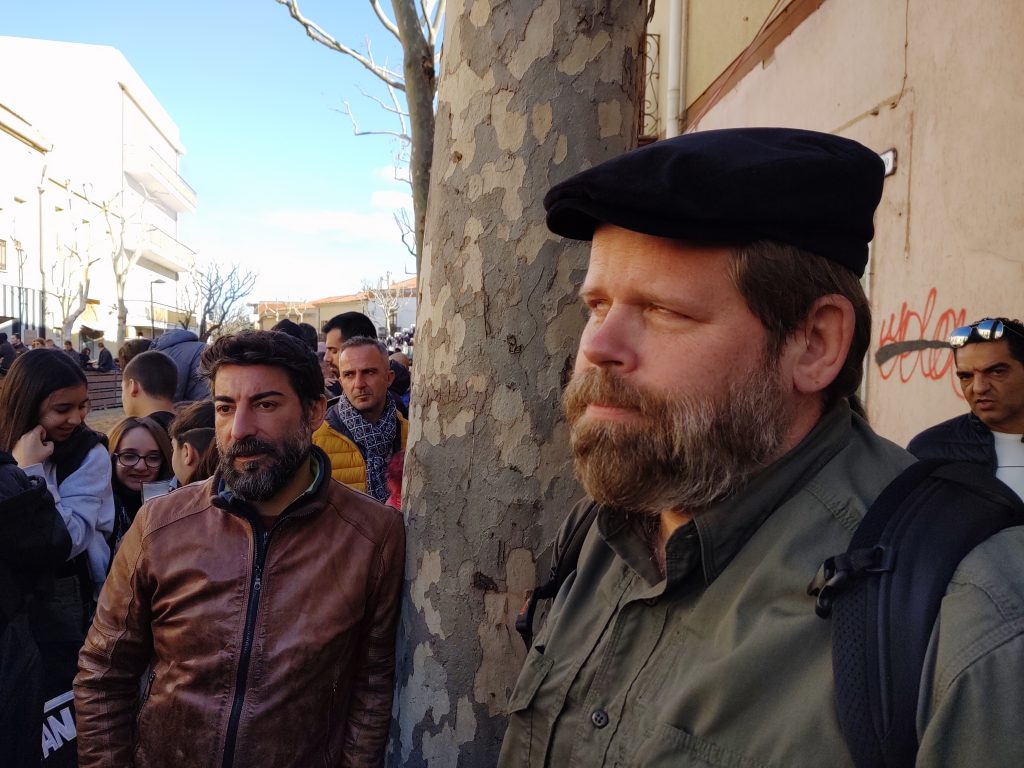
I didn’t get photos of the galloping acrobatics. They were radically fast and skilled. A moment that I’ll always remember was when Ivo glanced at his phone and quietly announced to us that there was an outbreak of the Coronovirus in Milan, a city in Northern Italy. We had a sense of the severity of this virus, but no way to predict the future. The next day (February 24th) we flew home and spent two weeks distancing ourselves from others as a precaution. There were no tests available to see if we were carriers of the virus. We have both been healthy as has Ivo and his family.
Being able to travel to Sardinia was a gift. Especially now that travel is restricted. It opened a world of wonder about history and culture. We built friendships far from home. With email our new friend, Ivo, seems close and is in our heart. We plan to travel back to Sardinia to stay in Ivo’s newly remodeled hotel, tour the mines and limestone caves. We are fortunate to be a part of Sa Sartiglia, this medieval festival, and make the connections of new friends, Ivo and David. This experiences left us craving more trips and learning about other cultures.

